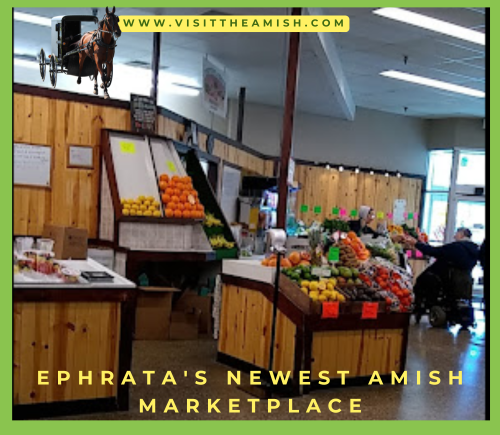A devastating fire that swept through the small village of Ovid, New York, on Tuesday night left a trail of destruction in its wake. However, the heroic efforts of hundreds of first responders, including a significant number of Amish volunteers, prevented an even worse outcome.
Ovid Fire Chief Timothy Westlake praised the crucial role played by the Amish community members in battling the blaze. “We would not be capable of doing what we do without the community of the Amish being involved with us,” Westlake said[2]. The fire chief highlighted the dedication and work ethic of these volunteers, referring to them as the “workhorses” of the department[2].
The collaboration between the fire department and the Amish community is a legacy of the late Chief William Palmer. Westlake credited Palmer for fostering a family-like relationship with the Amish and bringing them into the fold of the fire department[2]. “Former Chief Palmer worked with those guys, family level that chief had with those guys. He’s what brought them into our fold,” Westlake explained, adding, “We miss him very much. He was with me all night the other night guiding me through the whole thing”[2].
The fire, which began around 6:30 p.m. on Tuesday, January 21, 2025, started in an apartment above the Big M grocery store on Main Street[4]. It quickly spread to neighboring buildings, ultimately destroying six businesses, including the village’s only supermarket, and displacing 15 to 20 residents living in apartments above the affected structures[1][3].

(Photo by Julia Coburn/WHAM, Jan. 22, 2025)
Firefighters faced extreme challenges while combating the blaze. Temperatures plummeted to single digits, with wind chills as low as minus 15 degrees Fahrenheit[3]. The frigid conditions caused water to freeze instantly, complicating firefighting efforts. At one point, the village’s water supply was depleted, forcing firefighters to truck in water from as far as 45 minutes away[3].
Despite these obstacles, over 200 first responders worked tirelessly to contain the fire[1]. The Amish volunteers, alongside their fellow firefighters, battled the blaze for more than 11 hours in these harsh conditions[3]. Their dedication did not go unnoticed, with Chief Westlake emphasizing the overwhelming morale of the volunteers in the area[2].
The fire’s impact on the community has been significant. Six businesses were lost, including the Ovid Big M Supermarket, Italian Kitchen, Uptown Diner, and a laundromat[1][3]. The destruction of these establishments, particularly the grocery store, has been described as a blow to the heart of the village[3].
In the aftermath of the fire, the community has rallied together to support those affected. The Ovid Community Thrift Store opened its doors to provide free clothing and other necessities to fire victims[4]. Various donation centers were quickly established, and within days, they were overflowing with contributions from generous community members[2].
As the community begins to recover, investigations have revealed that the fire was likely caused by a charging device plugged into an electrical outlet[1]. This finding underscores the importance of fire safety and the proper use of electrical devices.
The Ovid fire department’s resilience was further tested as they responded to two additional fires in the surrounding area within the same 24-hour period, including one in the nearby hamlet of Willard[2]. Chief Westlake’s confidence in his team’s readiness to face such challenges speaks volumes about their dedication. “If we got a call like that right now and it wasn’t even in this area and we were asked to go, you’d see the same group of guys out there. If it was 11 hours, they’d be there 11 hours again,” he stated[2].
As Ovid begins the long process of rebuilding, the community’s spirit remains unbroken. The collaboration between the fire department and the Amish volunteers serves as a powerful reminder of the strength found in unity and the importance of community bonds in times of crisis.


(Photo by Julia Coburn/WHAM, Jan. 22, 2025)
Citations:
[1] https://www.weny.com/story/52228890/authorities-release-the-cause-surrounding-the-massive-fire-in-ovid-tuesday-night
[2] https://www.youtube.com/watch?v=6C5ahPea0vQ
[3] https://www.firehouse.com/operations-training/video/55262961/charging-device-blamed-for-fire-that-destroyed-block-in-village-of-ovid-ny
[4] https://www.weny.com/story/52220988/fire-tears-through-village-of-ovid
[5] https://13wham.com/news/local/gallery/ovid-fire-chief-credits-amish-volunteers-for-help-during-devastating-fire-main-street?photo=3
[6] https://www.yahoo.com/news/town-known-coming-back-ovid-125910290.html
[7] https://cnycentral.com/news/new-york-news/ovid-fire
[8] https://www.facebook.com/story.php?story_fbid=593969880000639&id=100081628970485
[9] https://www.whec.com/top-news/multiple-fire-crews-battle-large-blaze-of-multiple-buildings-in-seneca-county/
[10] https://www.firefighternation.com/firefighting/fire-rages-through-downtown-block-in-ovid-ny/
[11] https://www.wskg.org/regional-news/2025-01-22/fire-devastates-main-street-in-village-of-ovid
[12] https://www.firehouse.com/operations-training/article/12023039/general-alarm-fire-destroys-mixed-use-buildings-in-ovid-ny














